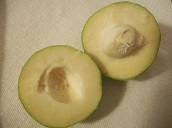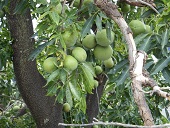| White Sapote - Casimiroa edulis | |||||||||||||
|---|---|---|---|---|---|---|---|---|---|---|---|---|---|
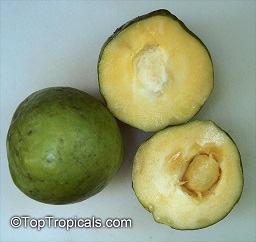 Fig. 1 Casimiroa edulis, white sapote 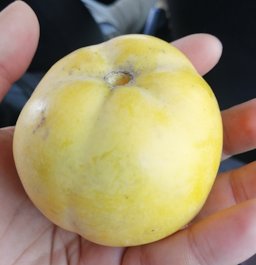 Fig. 2 White Sapote, C. edulis, República Dominicana 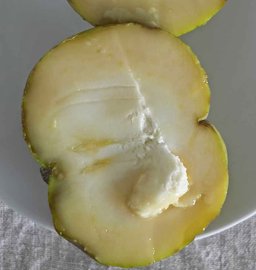 Fig. 3  C. edulis, white sapote fruit cut in half 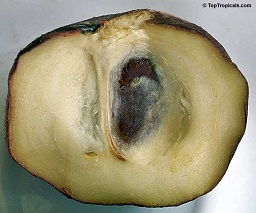 Fig. 4 White sapote 'Redland', grafted 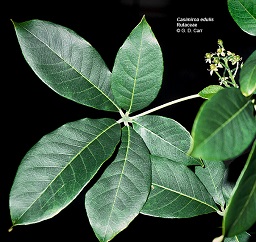 Fig. 7  C. edulis 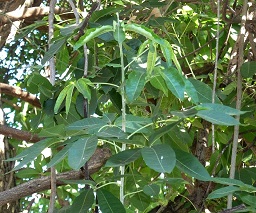 Fig. 10  Shoot with compound leaves of a white sapote at Voortrekkerbad, Limpopo, Africa 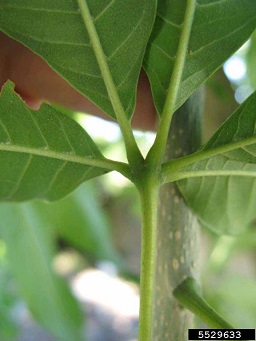 Fig. 11 White sapote (C. edulis cv. 'White Sapote') foliage  Fig. 12 White sapote (C. edulis cv. 'White Sapote') second - third year twig  Fig. 13  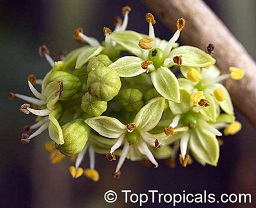 Fig. 14  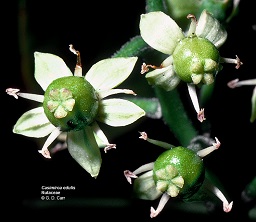 Fig. 15  C. edulis 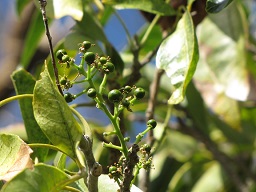 Fig. 16  C. edulis (white sapote), fruit at Enchanting Floral Gardens of Kula, Maui, Hawai'i 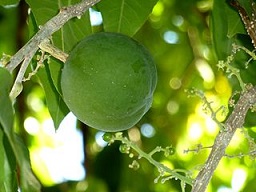 Fig. 17 Fruit and inflorescences of a white sapote at Voortrekkerbad, Limpopo, Africa  Fig. 18  White Sapote, C. edulis, Jutiapa, GT-JU, Guatemala 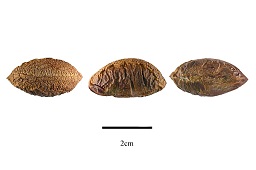 Fig. 19 C. edulis seeds 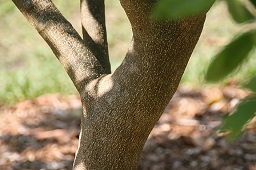 Fig. 20  C. edulis 'Smathers', Fairchild Tropical Botanic Garden, Miami, FL USA.  Fig. 21 Bark of a white sapote, with conspicous lenticels, at Voortrekkerbad, Limpopo, Africa  Fig. 22  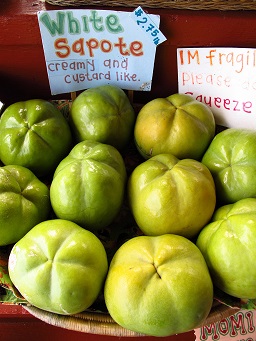 Fig. 23 White sapote fruit at the South Kona fruit stand in Hōnaunau, Hawai'i (Big Island) |
Scientific
name Casimiroa edulis La Llave & Kex. Common names English: casimiroa, Mexican-apple, white sapote; French: pomme mexicaine, sapote blanche; German: Cochilsapote, Weiße sapote; Portuguese: sapoti; Spanish: matasano, zapote blanco; Swedish: vit sapote 1 Synonyms C. edulis f. microcarpa Martínez; Fagara bobacifolia (A.Rich.) Krug. & Urb.; Zanthoxylum araliaceum Turcz.; Z. bombacifolium A.Rich. Relatives Woolly-leaf sapote, yellow sapote (C. tetrameria Millsp.), matasano, (C. Sapote Oerst.), C. pringlei 11 Family Rutaceae (citrus family) Origin Native to the highlands of Mexico and Central America USDA hardiness zones 8-10 9 Uses Food; small fruit tree; agricultural shade; screening; backyard tree 9 Height 15 ft-60 ft (4.6–18.3 m) 2 Crown Canopy is thick and spreading 5 Plant habit Upright to spreading growth habit 2 Growth rate Rapid, in spurts 16 Longevity 40-150 years; one of the original trees in Santa Barbara, California, was said to be over 100 years old in 1915 10,16 Trunk/bark/branches Bark rough; thick with conspicuous lenticels (Fig. 21); branches irregular, relatively brittle 4 Pruning requirement Needed for ease of harvest Leaves Evergreen, briefly decidous; palmately compound 4 Flowers Small, pale green to cream coloured; panicles of 15-100 flowers; Jan.-Feb. on new wood 2,4 Fruit Drupe; variable in shape and size; thin peel yellowish-greenish; sweet, white and smooth pulp; seeds large, white; climacteric 2,9,16 Season May-June; may fruit until Nov. 4 Nutrient Content pdf Light requirement Full sun Soil tolerances Well-adapted to most well-drained soils from sands, to clays, to limestone-based soils 2 pH preference 5.6-7.0 4 Drought tolerance Fairly drought tolerant; increases with age 10,16 Soil salt tolerance Not salt tolerant 16 Cold tolerance Young tree killed at 24 °F (-4 °C); mature trees at 26 °F (-3 °C) 2 Plant spacing 25 ft (7.6 m) or more feet away from the nearest tree and/or structure 2 Roots Shallow and agressive root system 5 Invasive potential * None reported Pest/disease resistance Few insect problems; some varieties are susceptible to scab, which causes irregularly-shape brown corky areas on the peel surface that usually split 2 Known hazard Seeds are poisonous; leaves, bark and seeds contain sedative compounds 16 Reading Material White Sapote Growing in the Home Landscape, University of Florida pdf White Sapote, Fruits of Warm Climates White Sapote, California Rare Fruit Growers Casimiroa edulis Llave & Lex., Agroforestree Database The White Sapote and Wooly-Leaf White Sapote, Archives of the Rare Fruit Council of Australia Origin Highlands of central Mexico and Central America. 2 The White Sapote (Casimiroa edulis) and Wooly-Leaf White Sapote (C. tetrameria) are members of a small genus of 5 doubtfully distinct species confined to Mexico and Central America as far south as Costa Rica. The genus Casimiroa was named after a late 18th century Spanish botanist, Cardinal Casimiro Gomez de Ortego. It belongs to the Rutaceae family which includes the well known Citrus species, the Wampee (Clausena lansium), the Bael fruit (Aegle marmelos), and the Wood apple (Feronia limonia). 13 Description The white sapote is a species with great potential as a dooryard fruit in Florida. Despite its name, it does not belong to the Sapote family, but is a distant citrus relative. The flavor of the custard like pulp ranges from fair to spectacular. A mature tree is capable of very high yields. The white sapote is a rugged species and will grow and fruit as far north as Orlando. 5 The common name for this tree may be confusing, for it is not actually related to the sapotes in the family Sapotaceae. The Aztecs called this tree cochiztzapotl ("sleep-producing sapote"), for they believed that eating the fruit induced sleepiness. 7 Leaves
Fig. 8. White Sapote (C. edulis cv. 'White Sapote') Fig. 9. C. edulis (white sapote), Leaves, Kula Ace Hardware and Nursery, Maui, Hawai'i Flowers Flowers are small, inconspicuous, and greenish-yellow. They are born on short panicles. The flower of the white sapote is usually hidden in the foliage of the tree. 5 White sapote flowers are perfect although some flowers may be functionally female; male flowers may vary in the amount of pollen produced. Some cultivars (e.g. 'Reinikie commercial', 'Golden Globe', 'Blumenthal' and 'Yellow') require cross-pollination while others (e.g. 'Ortego' and 'Vernon') do not (George and Nissen, 1991). 6 Fruit The fruit measures from 2 to 5 inches in diameter. The skin ranges in color from green to golden-yellow. It is thin and tender but is inedible and bitter. The flesh ranges from white to off-white and is often dotted with minute yellow oil glands. The texture is smooth, moist, and custard like. The taste is sweet with hints of banana, vanilla, lemon and peach. The fruit contains 3 to 8 seeds, up to an inch in length, that resemble giant citrus seeds. 5 White sapote fruit ripens six to nine months from bloom. Some cultivars are alternate bearing. 11 Woolyleaf white sapote, Casimiroa tetrameria, is preferred by some. 4 The woolly-leaved white sapote, often called C. tetrameria may be only a variant of C. edulis. It usually has 5 leaflets, larger and thicker than those of C. edulis and velvety-white on the underside, and all the parts of the flowers are in 4's. 8
Fig. 5. Fruit, cut open to show the flesh and the seed Fig. 6. White Sapote C. edulis, Papalotla, Estado de México Note: Fruits are excellent when eaten ripe (Fig. 3,4). Unripe fruits have a bitter taste, and flesh very near the skin can sometimes have a bitter taste. Usually the flesh is scooped out with a spoon and eaten raw. 12 Varieties There are a numerous white sapote varieties, and a number of varieties are available in the U.S. and Florida. Commonly available varieties include ‘Reinikie’, ‘Dade’, ‘Pike’, ‘Suebelle’, ‘Smathers’, ‘Homestead’, and ‘Golden’. 2 Varieties for Florida, University of Florida
Harvesting A slight color change is often the best indication of maturity. The fruit must be clipped from the branch. If it is pulled from the branch, the area around the stem insert will spoil before the rest of the flesh ripens. The fruit is ready to eat when slightly soft to the touch. 5 Fruits that have ripened on hand will keep in good condition in the home refrigerator for at least 2 weeks. 10 Depending upon climate and cultivar, white sapote may have up to five crops/year. Days from flowering to harvest is about 120. Fruit thinning has been observed to increase fruit size (McCain, 1993). 6 Pollination White sapote flowers are pollinated by insects. Some varieties may only produce functionally female flowers and thus require cross pollination for good fruit production. 2 In Florida, flowers of some heavy-bearing, double-cropping, trees have been observed so heavily worked by bees that their humming is heard several feet away. 10 Propagation White sapote trees may be propagated by seed or vegetatively. Seeds should be planted within 3 weeks of harvesting from the fruit, and seedlings may begin to bear in 7 to 8 years. White sapote varieties do not come true to seed and therefore must be vegetatively propagated by grafting or budding onto seedling rootstock. Seeds should not rattle, as this indicates over dehydration and poor germination will result. 13 Grafting and budding is most sucessful during the warm season when trees are actively growing. 2 Grafted trees will start bearing in 3 or 4 years. 10
Pruning Newly planted trees may be cut back to 3 ft (1 m) to encourage low branching and periodic tipping of elongated shoots is recommended to induce further branching. Light annual pruning is recommended to produce more fruiting laterals and internal leaf coverage to protect fruit from sunburn. 6 Alternatively, young trees should have their terminal buds removed when they are 3 ft (1 m) tall to promote lateral branching. When the new laterals have grown to 2ft (0.6 m) in length, they too should have their terminal buds removed to induce even more branching. 7 Cultivars which naturally set heavy crops of small-sized fruit may need to be thinned to only one or two fruit per cluster. 14 Fertilizing After planting, when new growth begins, apply 1/4 lb (113 g) of a young tree fertilizer such as a 6-6-6-2 (%nitrogen-% phosphate-% potash-% magnesium) with minor elements with 20 to 30% of the nitrogen from organic sources. Repeat this every 6 to 8 weeks for the first year, then gradually increase the amount of fertilizer to 0.5, 0.75, 1.0 lb (227 g, 341 g, 454 g) as the tree grows. Use 4 to 6 minor element (nutritional) foliar sprays per year from April to September. 2 For mature trees, 2.5 to 5.0 lbs (1.1–2.3 kg) of fertilizer per application 2 to 3 times per year is recommended. The fertilizer mix should also include phosphate (P2O5) and potash (K2O); use a 6-6-6, 8-3-9 or similar material. Use 2 to 3 minor element (nutritional) foliar sprays per year from April to September. 2 Irrigation Newly planted white sapote trees should be watered at planting and every other day for the first week or so, and then 1 to 2 times a week for the first couple of months. During prolonged dry periods (e.g., 5 or more days of little to no rainfall), newly planted and young white sapote trees (first 3 years) should be watered once a week. Once the rainy season arrives, irrigation frequency may be reduced or stopped. 2 Once white sapote trees are 4 or more years old, watering will be beneficial to plant growth and crop yields only during very prolonged dry periods during the year. Mature white sapote trees do not need frequent watering, and over watering may cause trees to decline or be unthrifty. 2 Withold water while dormant or fruiting will be scarce. 4 Pests The white sapote has few natural enemies but the fruits of some cultivars are attacked by fruit flies. 10 Food Uses White sapotes are best eaten uncooked. Cooking makes them limp and less flavorful. Sapotes can be eaten alone or combined with other fresh fruits in salads for added interest. Puree peeled, seeded sapote and mix with orange juice or milk and a few drops of vanilla to make a refreshing drink. 3 C. edulis fruit has a remarkably high food value, almost as rich in protein, carbohydrate and vitamins as bananas. 9 They freeze very successfully, will keep indefinitely and when thawed retain their original flavour. They can be frozen whole, or the pulp can be sliced, chopped or blended before freezing, and can be used like ice cream when desired. A delicious milk shake can be made by blending fresh soft or frozen pulp with enough cold milk to give a thick milk shake. 13 White Sapote Frozen Dessert, Hawai'i Tropical Fruit Growers pdf South Florida Tropicals: White Sapote, University of Florida pdf (archived) Medicinal Properties ** C. edulis's bark, seeds and leaves contain a glucoside called Casimirosine that has proved to have an hypnotic and sedative effect. Regionally, it is used medicinally to induce sleep, and a decoction of the leaves is also used to treat diabetes, while in China it is popularly used to lower blood pressure. 9 Toxicity The seed is said to be fatally toxic if eaten raw by humans or animals. Extractions from the kernels are an attractive and lethal bait for American cockroaches, having the advantage of killing on the spot rather than at some distance after ingestion of the poison. 8 General Botanically it is Casimiroa edulis; the species is in the family Rutaceae, which also includes Citrus. Their mutual affinity can be seen in the seeds, as those of Casimiroa are a replica of an orange pip magnified by ten. 15 Further Reading Casimiroa, Archives of the Rare Fruit Council of Australia Goldenberry, Passionfruit, & White Sapote: Potential Fruits for Cool Subtropical Areas, New Crops, Purdue University The White Sapote, Archives of the Rare Fruit Council of Australia White Sapote, Manual Of Tropical And Subtropical Fruits White Sapote: Unique and Delicious, Fairchild Tropical Botanic Garden The White Sapote, Tropical Fruit News, RFCI List of Growers and Vendors |
||||||||||||
| Bibliography 1 "Taxon: Casimiroa edulis La Llave & Lex." USDA, Agricultural Research Service, National Plant Germplasm System, 2019, GRIN-Global, npgsweb.ars-grin.gov/gringlobal/taxonomydetail.aspx?id=9292. Accessed 11 Jan. 2019. 2 Crane, Jonathan H., and Carlos F. Balerdi. "White Sapote Growing in the Home Landscape." Horticultural Sciences Dept., UF/IFAS Extension, HS1054, Original pub. Nov. 2005, Rev. Nov. 2016, Reviewed Dec. 2019, Reviewed 24 June 2023, AskIFAS, edis.ifas.ufl.edu/hs304. Accessed 11 Jan. 2019, 15 Apr. 2020, 13 Aug. 2024. 3 Simmonne, Amy, et al. "South Florida Tropicals: White Sapote." Family Youth and Community Sciences Dept., UF/IFAS Extension, FCS8539, Original pub. July 2004, Rev. Aug. 2007, Rev. July 2015, AskIFAS, edis.ifas.ufl.edu/he632. Archived. Accessed 11 Jan. 2019. 4 Florida Fruit, Tampa, Maxwell, Lewis S., 1967. 5 Boning, Charles R. Florida's Best Fruiting Plants- Native and Exotic Trees, Shrubs, and Vines. Sarasota, Pineapple Press, 2006. 6 The Encyclopedia of Fruit & Nuts, Edited by Jules Janick and Robert E. Paull, Cambridge, CABI, 2008. 7 Staples, George W., and Derral R. Herbst. A tropical Garden Flora, Plants Cultivated in the Hawai'ian Islands and other Tropical Places, Honolulu, Bishop Museum Press, 2005. 8 Orwa, C., et al. "Casimiroa edulis Llave & Lex." Agroforestree Database: a tree reference and selection guide, version 4.0, 2009. www.worldagroforestry.org/treedb2/speciesprofile.php?Spid=17985#. Accessed 12 Jan. 2019. 9 Barwick, Margaret. Tropical & Subtropical Trees. A Worldwide Encyclopaedic Guide. London, 2004. 10 Fruits of Warm Climates. Julia F. Morton, Miami, 1987. 11 "White Sapote." California Rare Fruit Growers, www.crfg.org/pubs/ff/whitesapote.html. Accessed 11 Jan. 2019. 12 "White Sapote, Casiniroa edulis." Trade Winds Fruit, www.tradewindsfruit.com/content/white-sapote.htm. Accessed 2 Feb. 2019. 13 Higham, D. C. "The White Sapote and the Wooly-Leaf White Sapote" Archives of the Rare Fruit Council of Australia, Sept. 1981, rfcarchives.org.au/Next/Fruits/WhiteSapote/WhiteSapote8-81.htm. Accessed 2 Feb. 2019. 14 George, A. P. "Casimiroa." Archives of the Rare Fruit Council of Australia, Extract from Australian Horticulture July, 1986, Jan. 1987, rfcarchives.org.au/Next/Fruits/WhiteSapote/Casimiroa1-87.htm. Accessed 4 Jan. 2019. 15 Recher, Paul. "The White Sapote." Archives of the Rare Fruit Council of Australia, July 1983, rfcarchives.org.au/Next/Fruits/WhiteSapote/WhiteSapote7-83.htm. Accessed 4 Feb. 2019. 16 "Growing White Sapote: Casimiroa edulis." Garden Oracle, Botanical Overview, Feb. 2024, gardenoracle.com/images/casimiroa-edulis.html. Accessed 13 Aug. 2024. Videos v1 "The Kampong White Sapote is self fertile and produces and abundant crop of sweet, tasty, fruit." Daileysfruit, 18 Dec. 2019, (CC), www.youtube.com/watch?v=NJ_G6XsAmnw. Accessed 16 June 2021. v2 "How to Graft White Sapote Fruit Trees - Grafting for Beginners!" Sulcata Grove, 11 Nov. 2017, www.youtube.com/watch?v=LDuKNNu5b-s. Accessed 16 June 2021. Photographs Fig. 1,4,13,14 "White sapote Redland, grafted," Top Tropicals, toptropicals.com/cgi-bin/garden_catalog/cat.cgi?uid=Casimiroa_edulis. Accessed 11 Jan. 2019. Fig. 2 Martínez Uribe, Judá Isaí. "White sapote (Casimiroa edulis), República Dominicana." iNaturalist, Research Grade, 27 July 2022, (CC BY-NC 4.0), Image cropped, www.inaturalist.org/observations/128236931. Accessed 13 Aug.2024. Fig. 3 "Casimiroa edulis, White sapote." Edible Culture, 14 Jan. 2015, (CC BY-NC-SA 2.5 AU), edibleculture.blogspot.com/2015/01/black-and-white-sapote.html. Accessed 13 Aug. 2024. Fig. 5 Weisser, Eric. "Ripe fruit, cut open to show the flesh and the seed." Tropical Plants Database, (CC BY-SA 2.0), tropical.theferns.info/image.php?id=Casimiroa+edulis. Accessed 2 Feb. 2019. Fig. 6 Rodriguez, Luis. "White Sapote Casimiroa edulis, Papalotla, Estado de México." Encyclopedia of Life, Photo 977168, June 29, 2014, (CC BY-NC 4.0), eol.org/media/3353060. Accessed 7Feb. 2019. Fig. 7,15 Carr, Gerald. "Casimiroa edulis, Mauka-Ewa of Sinclair Library, near University Ave." Mānoa campus plants, University of Hawai'i, www.botany.hawaii.edu/faculty/carr/page5.htm. Accessed 6 Feb. 2019. Fig. 8 NCSC Herbarium. "White Sapote (Casimiroa edulis cv. White Sapote) foliage." NCSC Herbarium, Citrus ID, USDA APHIS PPQ, Bugwood.org, no. 5529633, Uploaded Mar. 23, 2015, Updated Mar. 31, 2015, Bugwood, (CC BY-NC 3.0 US), www.invasive.org/browse/taxthumb.cfm?fam=432&genus=Casimiroa. Accessed 6 Feb. 2019. Fig. 9 Starr, Forest and Kim. "Casimiroa edulis (White sapote), Leaves, Kula Ace Hardware and Nursery, Maui, Hawai'i." Starr Environmental, Sept. 06, 2007, (CC BY 2.0), starrenvironmental.com/images/image/?q=24596175240. Accessed 11 Jan. 2019. Fig. 10 JMK. "Shoot with compound leaves of a White sapote at Voortrekkerbad, Limpopo." Commons Wikimedia, 15 June 2014, (CC BY-SA 3.0), commons.wikimedia.org/wiki/Category:Casimiroa_edulis#/media/File:Casimiroa_edulis,_blare,_Voortrekkerbad.jpgd.jpg. Accessed 12 Jan. 2019. Fig. 11 "White Sapote (Casimiroa edulis cv. White Sapote)." NCSC Herbarium, Citrus ID, USDA APHIS PPQ, Bugwood.org, no. 5529634, Uploaded Mar. 23, 2015, Updated Mar. 31, 2015, Bugwood, (CC BY-NC 3.0 US) www.ipmimages.org/browse/detail.cfm?imgnum=5529634. Accessed 6 Feb. 2019. Fig. 12 "White Sapote (Casimiroa edulis cv. White Sapote) Second - third year twig." NCSC Herbarium, Citrus ID, USDA APHIS PPQ, Bugwood.org, no. 5529642, Uploaded Mar. 23, 2015, Updated March 31, 2015, Bugwood, (CC BY-NC 3.0 US), www.invasive.org/browse/taxthumb.cfm?fam=432&genus=Casimiroa. Accessed 6 Feb. 2019. Fig. 16 Starr, Forest and Kim. "Casimiroa edulis (White sapote), Fruit at Enchanting Floral Gardens of Kula, Maui, Hawai'i." Starr Environmental, 12 Mar. 2012, (CC BY 2.0), starrenvironmental.com/images/image/?q=24506573024. Accessed 12 Jan. 2019. Fig. 17 JMK. "Fruit and inflorescences of a White sapote at Voortrekkerbad, Limpopo." Commons Wikimedia, 15 June 2014, (CC BY-SA 3.0), commons.wikimedia.org/wiki/Category:Casimiroa_edulis#/media/File:Casimiroa_edulis,_vrug_en_bloeiwyses,_Voortrekkerbad.jpg. Accessed 12 Jan. 2019. Fig. 18 Molina, Marvin. "White sapote (Casimiroa edulis), GT-JU, GT." iNaturalist, Research Grade, 18 May 2024, (CC BY-NC 4.0), Image cropped, www.inaturalist.org/observations/216681153. Accessed 13 Aug.2024. Fig. 19 Gibbons, Robert J. "Casimiroa edulis seeds." USDA, Agricultural Research Service, National Plant Germplasm System, 3 Mar. 2006, GRIN-Global, npgsweb.ars-grin.gov/gringlobal/ImageDisplay.aspx?type=taxonomy&id=4595. Accessed 11 Jan. 2019. Fig. 20 Stang, David J. "Casimiroa edulis 'Smathers', Fairchild Tropical Botanic Garden, Miami, FL USA." Commons Wikimedia, 15 Feb. 2007, (CC BY-SA 4.0), commons.wikimedia.org/wiki/Category:Casimiroa_edulis#/media/File:Casimiroa_edulis_Smathers_2zz.jpg. Accessed 12 Jan. 2019. Fig. 21 JMK. "Bark of a White sapote, with conspicous lenticels, at Voortrekkerbad, Limpopo." Commons Wikimedia, 15 June 2014, (CC BY-SA 3.0), commons.wikimedia.org/wiki/Category:Casimiroa_edulis#/media/File:Casimiroa_edulis,_bas_met_lentiselle,_a,_Voortrekkerbad.jpg. Accessed 12 Jan. 2019. Fig. 22 Ponce Tejeda, Gilberto. "White Sapote Casimiroa edulis." Encyclopedia of Life, no. 2647660, Nov. 12, 2015, EOL, (CC BY-NC 4.0), eol.org/media/3353052. Accessed 7Feb. 2019. Fig. 23 Gray, Nate (cphotoj). "White sapote fruit at the South Kona Fruit Stand in Hōnaunau, Hawai'i (Big Island)." Flickr, June 4, 2013, (CC BY-NC-SA 2.0), www.flickr.com/photos/a-culinary-photo-journal/9032290002Accessed 12 Jan. 2019. * UF/IFAS Assessment of Non-native Plants in Florida's Natural Areas ** Information provided is not intended to be used as a guide for treatment of medical conditions. Published 7 Feb. 2019 LR. Last update 13 Aug. 2024 LR |
|||||||||||||


